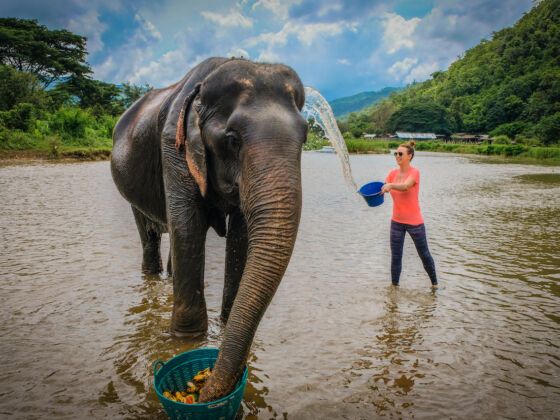HANGING OUT with an elephant in Thailand is easy to do. What’s not so simple is finding a reputable place that cares about and protects its elephants.
A well-taken-care-of elephant has room to roam and isn’t overworked by constantly performing in shows or giving endless rounds of rides. Here are three elephant sanctuaries with great reputations to look into visiting during your trip to Thailand, plus some background on why you shouldn’t ride an elephant and some tips to make your time at the sanctuary more memorable.
